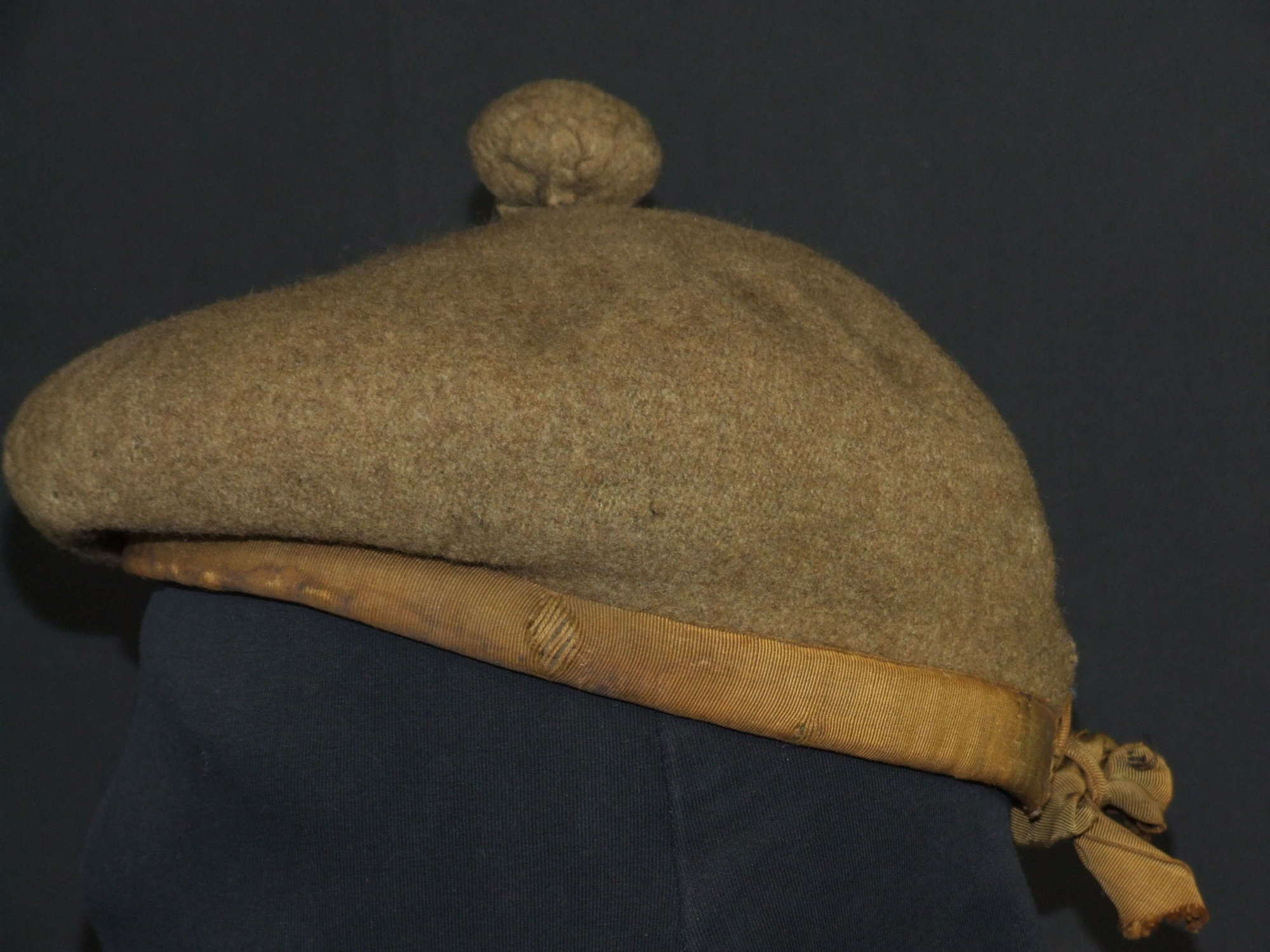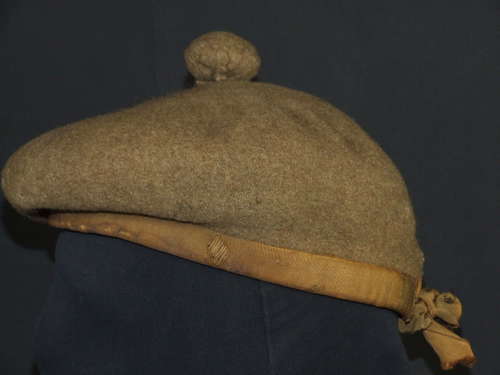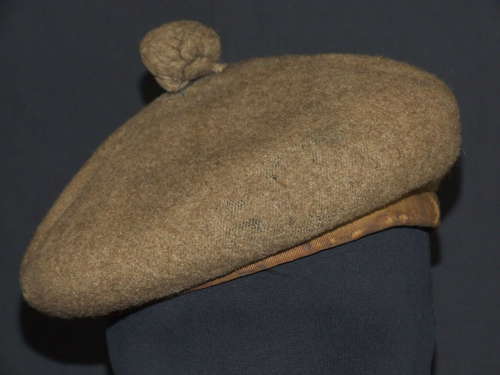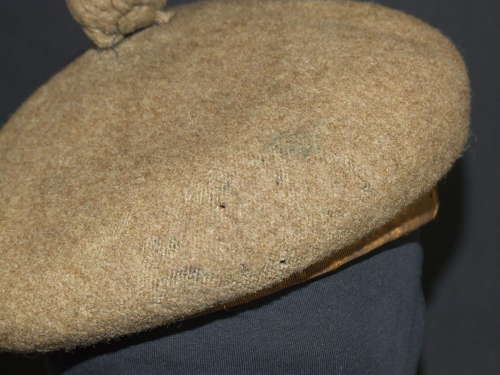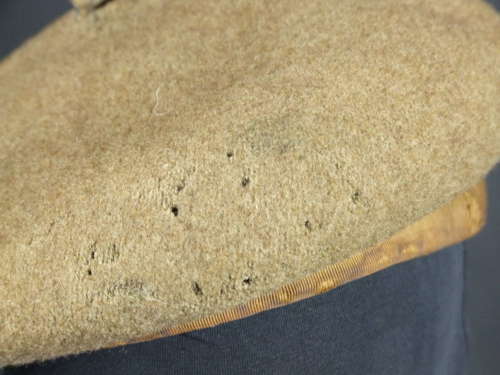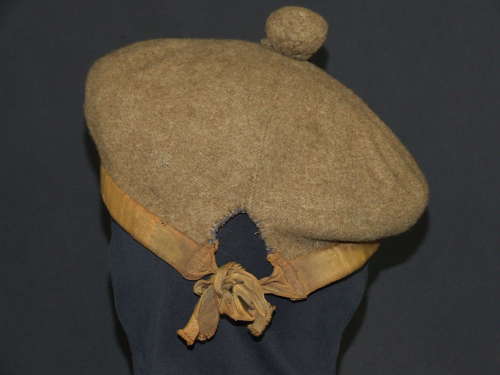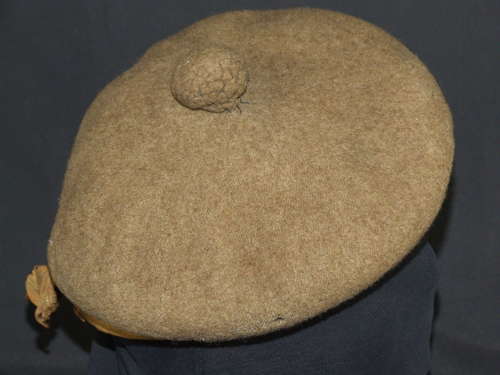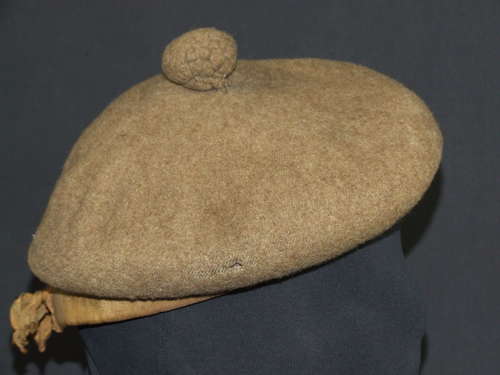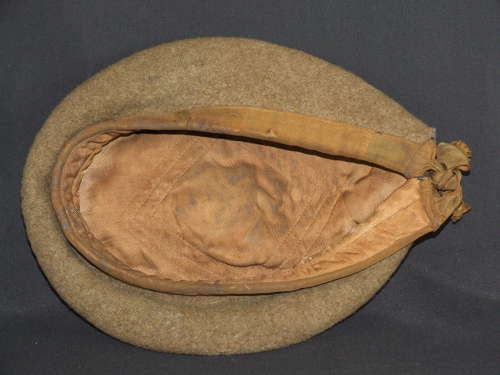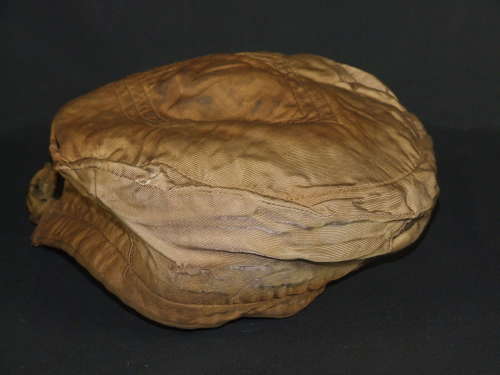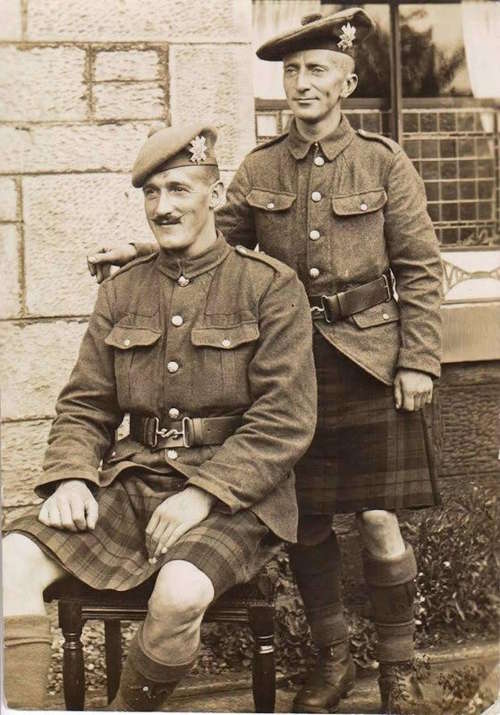Rare WW1 Scottish 1915 combat Khaki Balmoral Bonnet for an Officer
SOLD
Although this item has been sold, we have a range of similar items that may be of interest to you.
View similar items
Delivery Quote Request
Please fill in the form below to request a delivery quote from The Militaria Dealers.
Contact The Militaria Dealers
 Surrey, United Kingdom
Surrey, United Kingdom
Simply fill in the below form to get in touch with The Militaria Dealers regarding this item.
About this item
A seldom encountered 1915 combat Khaki Balmoral Bonnet for Scottish troops. This example is the officer’s version with the better quality lining, this being the only difference to the standard other ranks issue version of this rare piece of combat headgear.
At the start of hostilities in 1914 Scottish troops went to war wearing their famous Glengarry cap. Very quickly it was found however that this type of colourful headgear, though traditional, was actually rather unsuitable for the front line as it provided very little protection from either the rain or the sun, plus it would more often than not fall off in battle.
As a result of these flaws in the winter 1914-15 the Balmoral Bonnet was introduced for Scottish troops at the front. Just like the Glengarry before them the new Balmoral Bonnets were of knitted wool with black silk ribbon tails, however these were made in much more practical non-rigid circular shape similar to a beret. Initially the new Bonnets also came in three distinct colour types to follow the Regimental distinctions of the Glengarry: blue with a red toorie, blue with a blue toorie, and green.
In May 1915 however, to simplify manufacture and supply, as well as for obvious reasons of camouflage, the Khaki Balmoral was introduced as a replacement. This had the very distinctive one-piece knitted body, toorie, and silk headband and tails of its predecessors but now all made in khaki.
Upon issue of the Khaki Balmoral to their men Scottish officer’s naturally followed suit and had a version made for them. In practice this was identical to the issue type save for the lining as seen here.
Though the Khaki Balmoral was an improvement on things it did still require specialist manufacture, thus in an effort to simplify issue manufacture even further, it too was replaced just a few months after its introduction. On this occasion it was decided a totally new and much easier type of manufacturing process should be used and so the well known Khaki Tam-o'-Shanter was born. In essence this was similar to the Balmoral, however now the bonnet was simply made from pieces of khaki uniform-type serge cloth sewn together, with the silk tails being dropped outright. The body of the bonnet was also increased in size for a more marshal appearance.
As previously Scottish officers often chose to emulate their troops in this regard, once more having officer versions of the larger Tam-o’-Shanter made up to follow the issue pattern. These officer Tams now made from pieces of khaki gabardine or felt sewn together instead of serge and the omitted tails replaced by a small silk bow.
Some officers did however choose to continue wearing their 1915 Khaki Balmorals to show their seniority, when doing so they now tied the dropping tails to form a large bow, as is the case on this example.
Unlike its Tam replacement, the Khaki Balmoral is a true piece of combat headgear. At the time of its introduction steel helmets were not yet in use by the British Army, thus Khaki Balmorals were the headgear that saw active service by Scottish troops in the front line. By the time the Tam-o'-Shanter made its appearance just a few months later, so had the first British steel helmets, consequently Tams were primarily used by the Scottish soldier at rest. As such, the Tam-o'-Shanter is the Scottish equivalent of the standard English Trench Cap, whereas the Khaki Balmoral Bonnet is the Scottish equivalent of the earlier English "Gor Blimey" Cap. The Khaki Balmoral Bonnet is thus easily just as rare as Gor Blimey Caps because of this, if not considerably rarer.
In period photographs the Khaki Balmoral can be seen in use all the way from the Battle of Loos to the Battle of the Somme. The small circumference of its crown making it easily discernible from its much larger Tam-o'-Shanter counterpart. In this latter period it was worn concurrently with the Tam, being proudly retained by veterans as a mark of their early service. For that reason some officers even chose to wear it throughout the war, thus usually wearing it to destruction in the process. This, along with its short initial issue span of just a few months, is the primary reason why the Khaki Balmoral is so seldom encountered today.
This Khaki Balmoral Bonnet has seen extensive service yet pleasingly it remains in very good condition. There is some staining to the lining and slight fraying to the silk headband which is also a little greasy from wear, but with some moth damage which I have shown in the images.
There is no silk square or tartan patch for the cap badge which is absolutely standard for Balmorals, on these the cap badge is usually worn flush with the body of the Bonnet. A cap badge has been applied at some time, this leaving only one pair of small holes east to west where the lugs have been. There are no markings to the lining as is usual.
It must be said that officer's Tam-o'-Shanters being of a similar appearance, are sometimes confused with the Khaki Balmoral. To the knowing eye however, the telltale lack of seam to the upper crown on Balmorals, as shown here, makes all confusion impossible.
One the rarer items of combat headgear from WW1, this example has clearly seen much active service.
A wonderful piece.
Additional Information
![]() Surrey, United Kingdom
Surrey, United Kingdom

